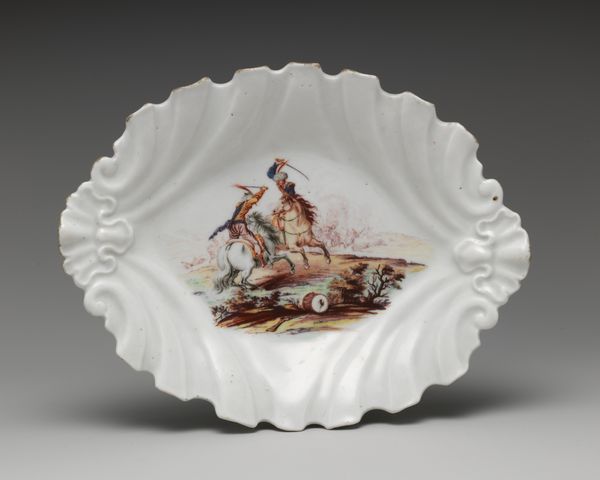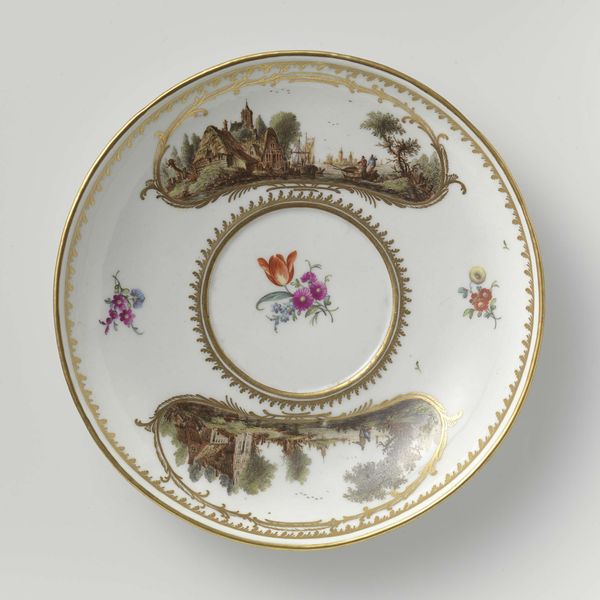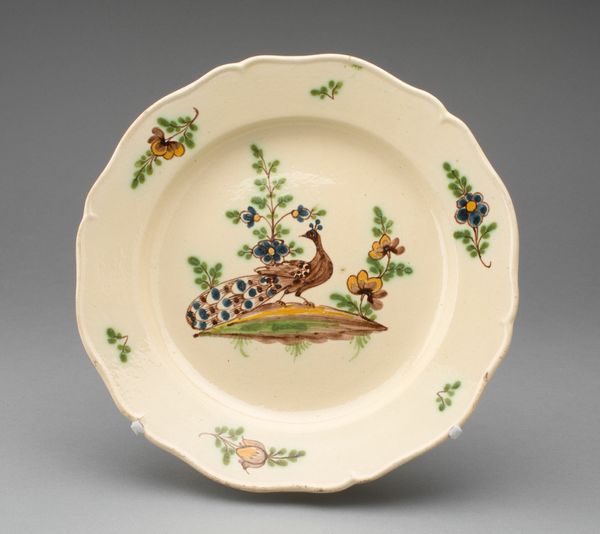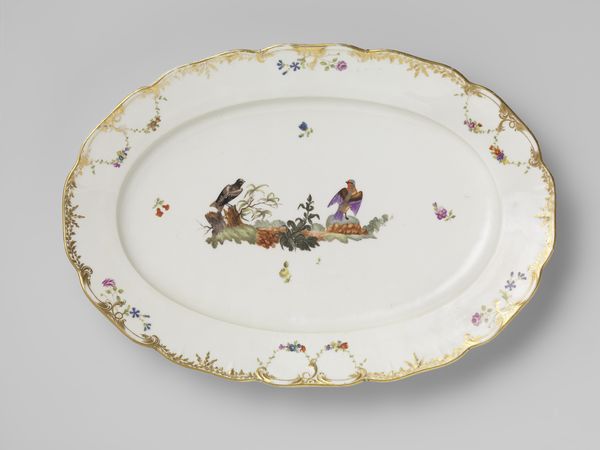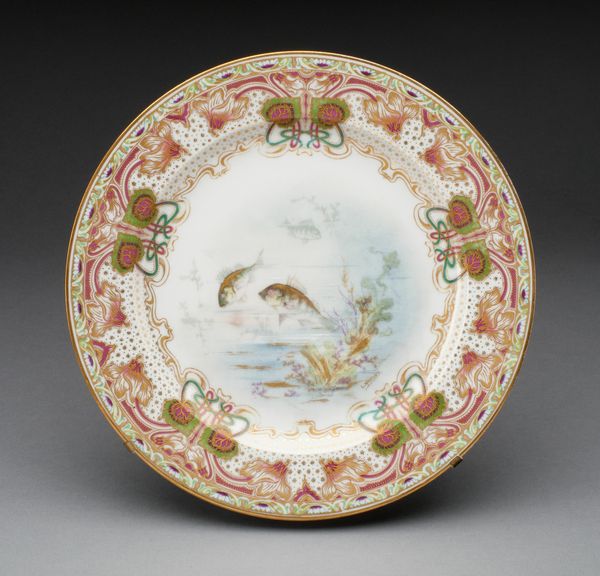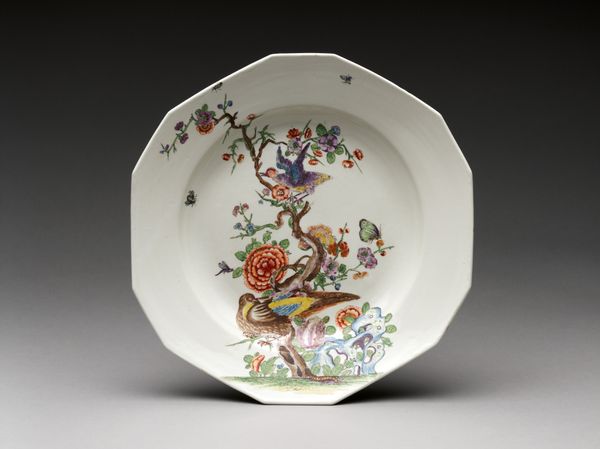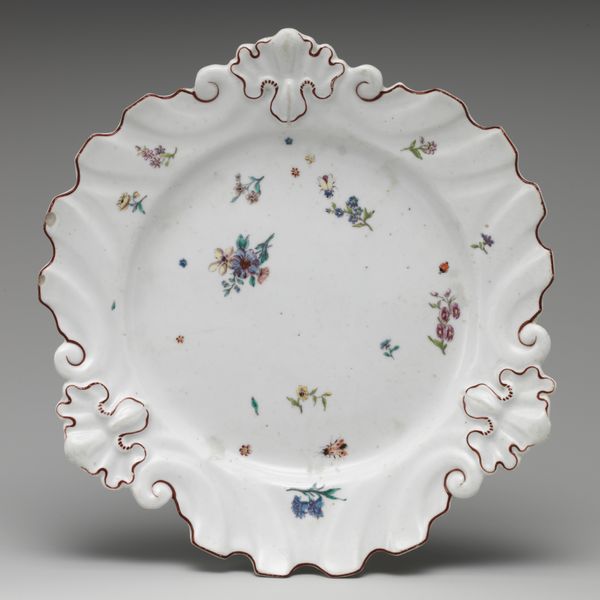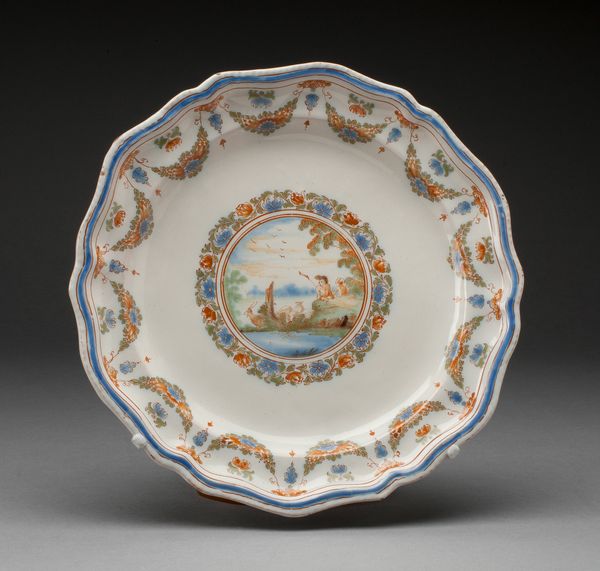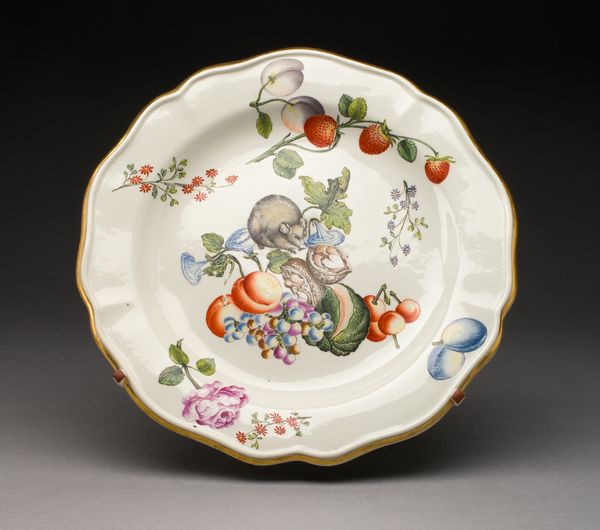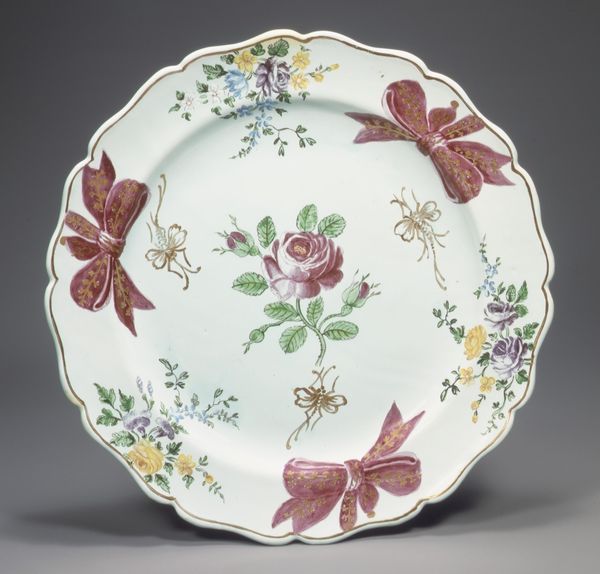
ceramic, porcelain, sculpture
#
ceramic
#
porcelain
#
sculpture
#
ceramic
#
genre-painting
#
decorative-art
#
rococo
Dimensions: L. 9 1/2 in. (24.1 cm.); W. 7 1/2 in. (19.1 cm.)
Copyright: Public Domain
Curator: This object is a porcelain dish, believed to be from the Chelsea Porcelain Manufactory between 1747 and 1760. Currently, it resides at the Metropolitan Museum of Art. Editor: It’s remarkable! I am struck immediately by the contrast. The ruffled, delicate white porcelain frame of the dish so starkly contrasts with the brutal, dynamic scene painted within it. Curator: Precisely! The Rococo style of the dish provides a light, decorative frame. How does the dish function as a container for violence, so to speak? The central painting clearly depicts a dramatic skirmish, a genre-painting reduced to fit within a domestic object. Editor: Yes, it's an act of domestication! This dynamic scene of conflict, of possible death, contained within the 'feminine' decorative shell. The composition pushes your eye immediately to the center, but it is pulled around the periphery due to the delicate floral design. The undulating rim feels at odds with the static central design. Curator: You touch on something interesting about domestic life. The object reflects how elite families likely considered aspects of their reality as appropriate decor. Notice that even the floral elements, meant to provide gentleness, seem like afterthoughts placed with an unsymmetrical nature to invoke organic visual continuity. Editor: There’s an undeniable tension between the aesthetic pleasure expected of such an object and the reminder of less idyllic aspects of human nature depicted within it. Also, look closely; the central image flattens form to highlight two-dimensionality. In contrast, the bordering frame invokes depth, especially given how it's glazed to a porcelain finish. Curator: Perhaps the very artificiality of this "natural" ornamentation signals the courtly patron’s distance from the raw events on display. Consider, too, that the central battle and figures echo traditional Christian battle imagery; that there's symbolic import related to good versus evil being implied on the whole. Editor: So it's not simply a decorative item, but also perhaps a coded message about power, morality, and the presumed civilizing influence of the elite? Curator: Possibly. What is most fascinating here is the dual function: beauty for beautification's sake; beauty for more symbolic cultural capital and political influence. Editor: It's a thought-provoking reminder that even the most seemingly innocuous objects can be loaded with cultural and historical significance. Curator: Indeed, a beautiful but challenging artifact.
Comments
No comments
Be the first to comment and join the conversation on the ultimate creative platform.
